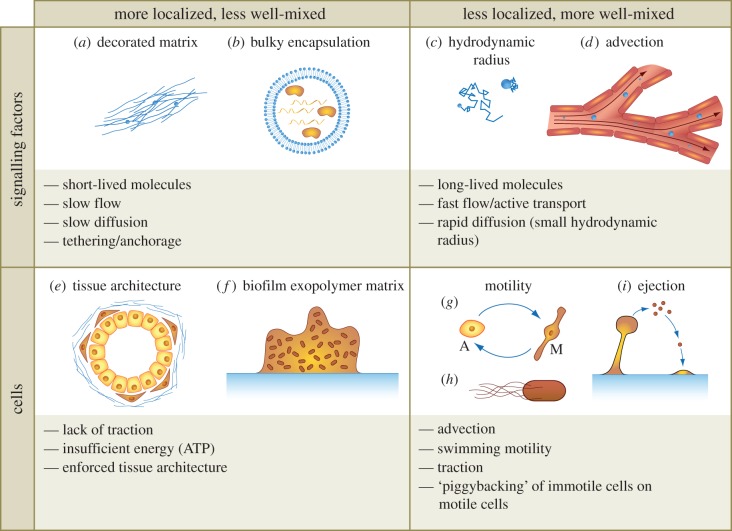Figure 4.
Factors that can contribute to localization versus homogeneous mixture in biological systems. Signalling factors might be relatively localized when (a) fixed on ECM or (b) encapsulated in bulky vesicles. (c) Smaller soluble factors or (d) factors carried by hydrodynamic flow could, in contrast, effect long-range cell–cell communication. Both (e) mammalian cell populations and (f) biofilm cellular communities display tissue architecture [17]. Transitions at the single-cell level (g) between amoeboid and mesenchymal phenotypes described in [18] might allow cells to move through spatially heterogeneous tissues. Socially coordinated phenotypic specialization can also contribute to spatial dispersal, as (i) when a cell population forms a stalk that supports a subpopulation of spore cells [19]. (Online version in colour.)

